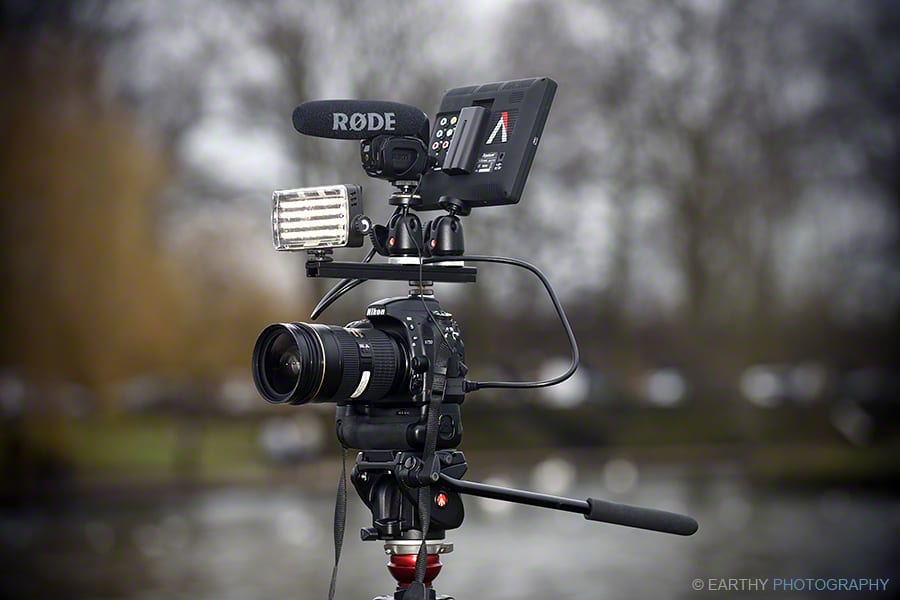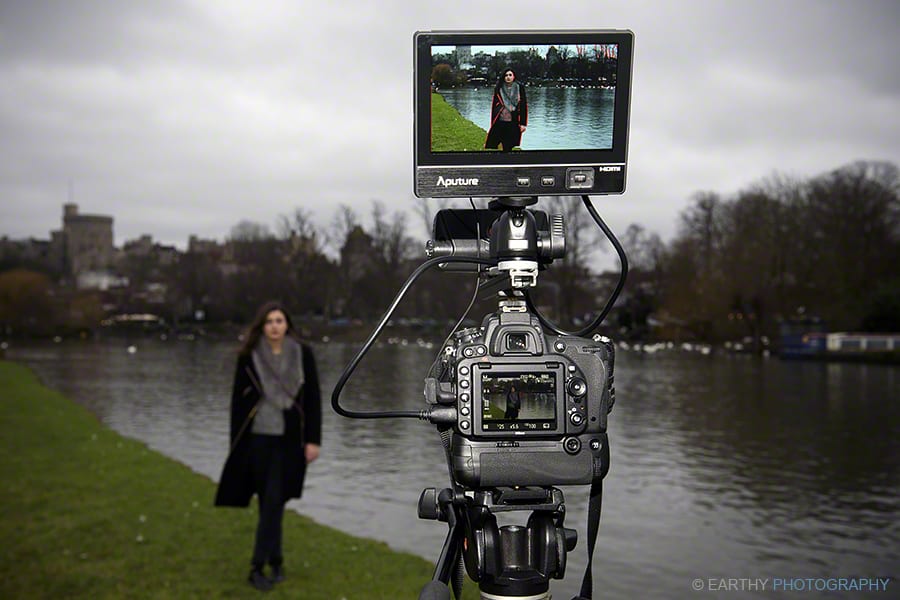


Film Focusing using DSLR Cameras
Having had the past benefit of reading other photographers blogs about camera equipment choices I thought I would share my own thoughts about film focusing using a DSLR camera, also my affordable setup for photographers that do not primarily use video but are required to do so on occasion. This setup works on any Nikon or Canon DSLR with an HDMI & Mic port.
The best thing about using a DSLR for filming
It is well understood that the large sensors found in DSLR’s create a wonderful film like quality with their shallow depth of field, an added bonus being that you can use your own array of lenses and you already have the cameras.
Manual focus on a DSLR for filming
Video on a DSLR is all about manual focus, you cannot use auto-focus. Manual focus is an art and is why on film sets they have dedicated manual focus crew member called a focus puller.
The small display screen on a DSLR fools you into thinking that everything is sharp, my tip into obtaining good manual focus lies in obtaining a quality 7” field monitor which has two aids that assist in exposure ‘zebra’ and focus ‘peaking’.
Zebra: Areas of the image over a certain threshold are filled with a striped or cross-hatch pattern which warns for over exposure.
Peaking: Detects the edges of highest contrast in an image (and therefore in focus) and highlights them in colour (as seen in the last image above).
The peaking aid on the monitor is fantastic for manual focusing and you can easily see when you are in focus on the large screen. With plenty of manual focus practise your film clips which have movement in them will be sharp, from what I gather many focus pullers rely almost entirely on monitors nowadays.
The handy thing about this equipment setup is that by using an adjustable hot shoe extension rail it can be used pointing straight down the lens or across the camera body. The different components can easily be added or taken off and different setups can be used for different occasions.
The setup in the images I am showing above is what I use in general film making whilst using a tripod and fluid video head – for editorial work the microphone for one-to-one interviews can be changed using the reporters shotgun microphone that plugs straight into the camera or by using a wireless lapel microphone like the RØDELink filmmaker kit.
1) 20cm (8”) Cold Shoe Extension Rail by Neewer £16.00 found on Amazon.
2) Led Midi Light Panel – Model ML360 by Manfrotto Led Lights £69.00. Newer models now available.
3) Shotgun Microphone – Model VideoMic Pro by RØDE £170.00.
4) V-Screen 7” LCD Field Monitor – Model VS-2 by Aputure £159.00. Aputure have just released a new VS-2 HD model.
Total cost £414.00
Optional: Even though the microphone & monitor come with their own cold shoe mount I have placed them on a Manfrotto Micro Ball Head Hotshoe Mount – Model 492LCD £48.00 each. This enables the monitor to be viewed in any direction and for the microphone to be raised above the light panel … when doing this for the microphone you will need a 1/4″ Female To 3/8″ Male Adaptor that can be found anywhere or by Manfrotto – model MN-088LBP £8.00.
Neutral Density Filter on a DSLR for filming
On a bright day to maintain a chosen wide aperture and film speed the only way of doing this is by using a Neutral Density Filter (ND). With these filters you pay for what you get and a very good filter like the Singh-Ray Variable ND Filter costs around £240.00
What is the affordable Video alternative?
Many news photographers and photojournalists are using a Canon XA25 Professional HD Camcorder which retails at around £1,350.00 – without the accessories such as a shotgun microphone, led light and a large monitor. On the plus side these camcorders are small and weigh just (camera only) 770g, they have built in auto-focus, ND Filter, Zebra, Peaking and 2 audio XLR inputs.
You cannot get the film look with a shallow depth of field using this camcorder but like everything else in photography it is a trade off.



















